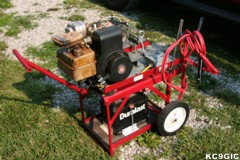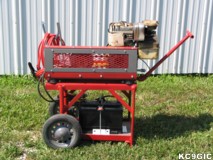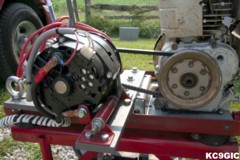Testing
Results
and Different Uses

What is it good for? I built it to do
several jobs. It can jump start a vehicle with it's on board battery,
and or supply 12 volt power to an inverter to operate power tools and
lights. The unit has powered my electric drills, grinder, sawzall, and
rechargers for cordless tools, It does an excellent job of powering my
ham radio equipment as the battery will last several hours and a short
engine run will recharge it with minimal noise and fuel consumption.
The machine does best as a charger. I ran a test by
powering two 13 watt fluorescent trouble lights from an inverter for 25
hours. A twelve inch B.& W. TV was added for another two hours.
When the inverter alarmed on low voltage, I ran the engine for about an
hour to fully recharge. This took around two quarts of gas. This is
much better fuel economy that a conventional generator that would have
burned almost 15 gallons to run this small load for the same time.
Speaking from experience, listening to a generator run all day gets old
quickly after a while on a job site or during a five day power outage.




